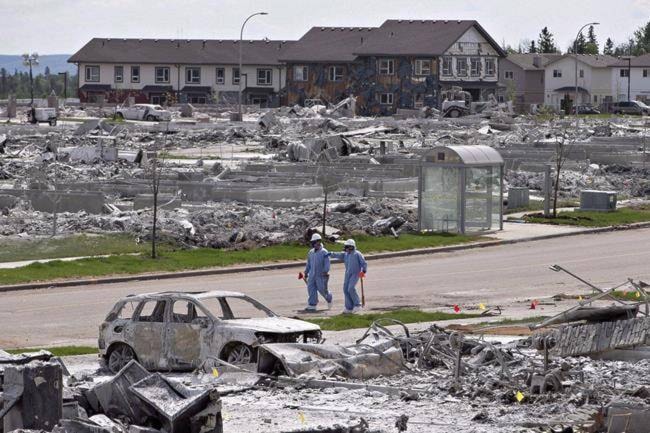The immense wildfire that scorched Fort McMurray in 2016 may have blackened more than homes.
Newly published research suggests the fire cast a lasting shadow over the lives of many residents who are still experiencing elevated rates of depression and related mental-health problems.
“There’s been a big jump,” said Vincent Agyapong, a psychiatrist and University of Alberta professor whose paper was published Saturday in the International Journal of Mental Health and Addictions.
But the research also revealed a way to help dispel the darkness.
Agyapong was working in Fort McMurray when the fire that came to be known as “The Beast” hit the city that May. He helped patients in the hospital get to safety before fleeing himself.
When he returned to his clinical practice in the city, after the immediate chaos subsided, he realized he had a chance to learn something about resilience.
“We thought it was an opportune time to change the focus to actually looking at the mental-health impacts of the Fort McMurray wildfire,” he said.
Agyapong and his colleagues developed an extensive survey that included questions about age, employment, where people were before the fire, how exposed they were, how much media they followed and their clinical history.
VIDEO: Develop a personal wildfire plan, B.C. fire chief says
The team received 486 completed responses.
Previously reported results found the rate of probable post-traumatic stress disorder was 12.8 per cent — more than 10 times the normal rate for Alberta.
Agyapong’s research used standard psychiatric tests to conclude the fire correlated to a much broader set of problems.
The survey found that six months after flames tore through parts of the city, almost 15 per cent of respondents were suffering from some type of major depressive disorder. The rate was 17 per cent for women and 10 per cent for men. The average Alberta rate is 3.3 per cent.
Those disorders were also associated with substance abuse.
“We found that those that presented with (depressive disorder) were far more likely to present with alcohol use disorder and substance use disorder as well as nicotine dependence,” Agyapong said.
The survey found those with depression symptoms were roughly twice as likely to abuse drugs and alcohol.
Preliminary results from further studies suggest those problems persist.
The researchers surveyed people who were visiting a health-care facility for any reason in November 2017, 18 months after the fire. Nearly one-quarter of respondents met the criteria for anxiety disorders and over 13 per cent for PTSD.
Agyapong cautioned that the data from that survey hasn’t been published and isn’t comparable to the previous survey. Still, he suggests that if one-quarter of people seeing their family doctor have a major depressive disorder, “that’s a huge proportion.”
“We found out 15 per cent fulfil the criteria for an alcohol use disorder and nine per cent fulfil the criteria for a substance abuse disorder. These are large numbers that we cannot just discount.”
Agyapong’s study also looked at what kept people resilient and protected them. The biggest single factor was human contact and support.
“Those who reported they received no support were about 13 times more likely to present with a major depressive disorder compared to those who reported they received high levels of support.
Emotional and social support as simple as a phone call were more important than material support from governments or the Red Cross, Agyapong found. It even helped with the loss of a home or business.
“Receiving support from family and friends can actually protect you from possible major depressive disorder,” Agyapong said.
Alberta Health Services says there has been more demand for mental-health services since the fire. The agency has responded by making more counsellors and clinical support workers available to the community.
Although it doesn’t have before-and-after numbers, the department reports having 51,084 client “contacts” about mental health between May 10, 2016, and June 30, 2018. Alberta Health still averages more than 1,200 visits a month to community addiction and mental-health services in Fort McMurray.
“Wildfire disasters are associated with a negative impact on the mental and physical health of those affected and those effects can be delayed in onset and can persist over several years,” said spokeswoman Kirsten Goruk. “Recovery takes time and some residents are still in various stages of recovery.”
Agyapong said the survey has implications for any community that suffers a disaster.
“It’s important for the community to pull together and for family members, friends, and relatives of people to actually reach out to them on the phone and offer every practical help that they can be able to offer.
“It’s not just help in the moment. It’s also help that’s going to protect their mental health down the line.”
READ MORE: Fire, smoke fill Saint John sky after oil refinery blast: ‘My whole house shook’
Bob Weber, The Canadian Press
Like us on Facebook and follow us on Twitter.
